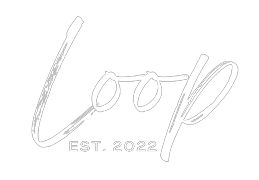Operating Model Transformation
Is your org chart complex and messy? Is your company going through big changes? Without proper structure, an already chaotic situation could get even more so. A well-defined operating model gives everyone in your organisation the big picture and much-needed clarity. It’s the answer to “How do we create and deliver value?” and “How do we do business right now?” Let us help you create it.
Trusted By
What is an Operating Model?
An operating model is a visual representation of how an organisation creates and delivers value to its customers. It covers every major aspect of your business.
- Organisational structure
- Decision-making strategies
- Resource allocation
- Collaboration dynamics
- Performance management practices
And much more.
Benefits of Operating Models
As much as half your employees currently lack clarity on what they ought to be doing and how their work fits into the overall company. Operating models help your workforce visualise and understand their roles better, while improving coordination and collaboration. They allow for effective execution, leading to increased profits, faster time to market and reduced company spending.
Different Types of Operating Models
In “Enterprise Architecture as Strategy: Creating a Foundation for Business Execution,” Robertson et al define 4 different types of operating models.
- Diversification – low standardisation/low integration
- Coordination – low standardisation/high integration
- Replication high standardisation/low integration
- Unification high standardisation/high integration
Diversification
Coordination
“Coordination calls for high levels of integration but little standardisation of processes. Business units in a Coordination company share one or more of the following: customers, products, suppliers, and partners. The benefits of integration can include integrated customer service, cross-selling, and transparency across supply chain processes. While key business processes are integrated, however, business units have unique operations, often demanding unique capabilities.”
Replication
“Replication models grant autonomy to business units but run operations in a highly standardised fashion. In a Replication model the company’s success is dependent on efficient, repeatable business processes rather than on shared customer relationships. The business units are not dependent on one another’s transactions or data; the success of the company as a whole is dependent on global innovation and the efficiency of all business units implementing a set of standardised business processes. Accordingly business unit managers have limited discretion over business process design, even though they operate independently of other business units.”
Unification
“When organisational units are tightly integrated around a standardised set of processes, companies benefit from a Unification model. Companies applying this model find little benefit in business unit autonomy. They maximise efficiencies and customer services by presenting integrated data and driving variability out of business processes.”
How to Develop and Document Your Operating Model
Since an operating model is a visual representation of your organisation, you’ll be using:
- Maps
- Charts
- Blueprints
- Matrix models
- People models
- Scorecards
- Decision grids
How can you tell if your operating model is working?
You’ll know your operating model is working when your decision making gets easier, teams are managed better and get more done, and your workforce understands how they fit into the big picture.
An effective operating model delivers value to stakeholders, enables clear and efficient decision-making processes, defines roles and responsibilities, provides context on current and future capabilities, and facilitates infrastructure that supports organisational activities. It optimises skills and resources, fosters good governance, provides clarity in roles, addresses capability needs, and leverages infrastructure as an enabler for organisational success.
Next Steps
Whenever you’re ready, here are three ways we can help:
- Contact us for a free consultation
- Check out our case studies
- Subscribe to our monthly newsletter below
